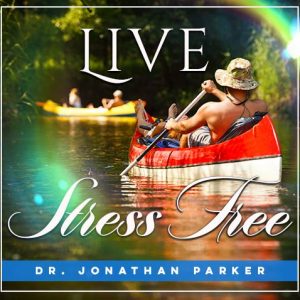
There is no doubt that the world we live in is an incubator for stress and anxiety. Whether there are concerns over the economy, or tension in relationships, or worry over health issues, nearly everyone has something that can make them feel anxious. In fact, anxiety is the most common and widespread of all psychological issues. Compounding this is that about half of those with anxiety also have depression.
As you might have guessed there are many anxiety treatments promising help for anxiety, but in this article I want to tell you about a way that can lead to lasting relief. This is also a natural treatment for anxiety that doesn’t not rely on pharmaceuticals.
Are You Anxious About Being Anxious?
First of all, consider the root of anxiety. An aspect of the way our brains work is to trigger a fight or flight response whenever we find ourselves in stressful situations. What this means is that our body responds to perceived threats with the resources to either fight the threat or run away from it. While this natural reaction would undoubtedly serve a purpose if we were actually in danger, the vast majority of stressful situations are not actually threatening us in the moment. What happens is we project what we think might happen and often we imagine a worst case scenario. This process is called “catastrophizing.” My mom used to say it this way, “Don’t make a mountain out of a mole hill.”
The future is always an unknown and to our mind this means there are potential threats. If you consider actual threats which you have been exposed to over your lifetime, together with bad news or uncertainty about your life situation, you can understand why your body might be in the fight or flight response periodically if not much of the time. In addition to general anxiety there are also specific forms such as panic attacks, posttraumatic stress disorder, social anxiety, and phobias.
There are any number of ways of approaching help for anxiety such as various herbal remedies, medications, breathing techniques, behavioral desensitization, cognitive therapy, yoga, meditation, biofeedback, and all of them can be helpful. You may need to try several until you find the combination that works best for you.
At the beginning of this article I told you I’d tell you about an anxiety treatment that can bring lasting relief. I know because it has worked for me and many others I have taught this to.
Where Anxiety Comes From
First, we need a little more background on some underlying causes of anxiety. Besides the obvious cause of threatening situations there are the perceptual threats which the mind projects. In most of these cases the mind believes there is something lacking. It may be a lack of security and safety, or a lack of opportunities, or a lack of things. It may be that there is not enough money, not enough love, not enough talent, not enough education, not enough toys, not enough time, not enough friends, or just not enough.
The point to understand about lack is that there is nearly always some area in which a person feels some lack. Lack is a point of view as well as an actual situation, and it is lack that the mind perceives as threatening and therefore anxiety producing. The problem is that when you operate your life from the position that you are lacking, you are driven to fill the lack with something outside of yourself.
When you operate from the point of view that you do not have what you want or need you feel driven on an endless quest to fill the need that you do not have enough or there is something missing. The need to fill lack is never ending because there will always be something that can be perceived as lacking or missing. This leads to endless searching and trying new and different things to fill the lack.
Where does the perception of lack come from? There is a component in our personality structure which operates this way. It is often referred to as the ego and it is relentlessly driven for more. But reaching for more to quell the inner lack, anxiety, and worry is like trying to grab the proverbial carrot at the end of a stick; it is always out of reach.
This is where the second component of who we are comes in. There is an aspect of ourselves that is sometimes called the authentic self, the natural self, the true self, the self-actualized self, the higher self and other such terms. The nature of this aspect of us is always in a state of peace, fulfillment, contentment, and happiness. That is not to say it does not allow for the pursuit of enjoyment in a variety of ways. It is just that it is not in turmoil or operating from a position of lack and the frantic need to fill that lack.
Here’s My Natural Treatment for Anxiety
Now, how do we deal with this information? Even though you might think to yourself you no longer want to operate your life from the vantage point of lack, you will probably find that a part of you holds on to that perception. So the first thing you must do to make the shift out of anxiety is bring your attention to the ways you think and feel there is lack. This puts you in touch with the pattern and is the first step to releasing it in order to shift into living life from the part of you that is free of this drive.
When you realize and connect with the sensations of how you experience lack you will initiate a shift out of it. Softly and slowly say the following to yourself,
“I release, let go, and dissolve all need for feeling lack.”
At this point you can label the specific forms of lack you feel.
Then say the following slowly to yourself:
“I embrace feeling complete and at peace.”
Those statements are best done with the eyes closed while repeating the words slowly so they sink in to the deepest parts of you. I’d suggest doing this for at the very least five minutes at a time. Obviously, you’ll need to repeat these words a number of times over the coming weeks. You can enhance the effect by resting one hand over the center of your chest while you repeat the words as this will help you to deepen your connection with the meaning of the words. As you feel the peacefulness coming in think of yourself like a sponge absorbing it into all the place where you have felt stressed or anxious.
Accompanying this approach with others you have found effective can lead to a long-term solution to worry, depression, and anxiety. I also have a two-hour audio program you will find helpful titled, “Stress Free – Be Calm & Peaceful“.

